|
Wisley's Alpine Log
By Paul Cumbleton
Log 22 - 23rd October 2008
It is always exciting when something flowers for the first time, especially if you were not expecting it. Three bulbous plants from our South African collection did this recently. Two of them were Brunsvigia species. Brunsvigias are very striking amaryllids and there are around 20 species, mainly winter growing and summer dormant. Many of them produce huge bulbs that may take ten or more years to reach flowering size. Ours are relatively small bulbs, just a few years old so I had not expected to see flowers for several years yet. But two of them surprised me. The first was Brunsvigia bosmaniae which had pink flowers held in an umbel which was about 18cm diameter.
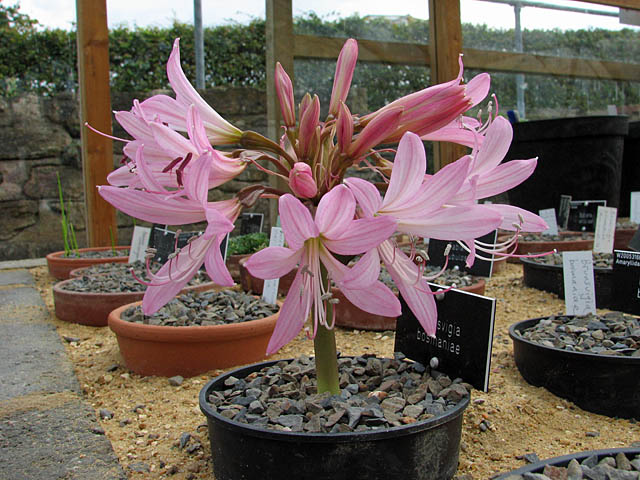
Brunsvigia bosmaniae
The umbel produced 18 flowers - not bad for a first flowering. Apparently old plants may have as many as 70 flowers in the umbel! The other species which flowered was Brunsvigia orientalis and similarly had around 18 flowers, this time red in colour but held in a much larger umbel, about 30cm across.
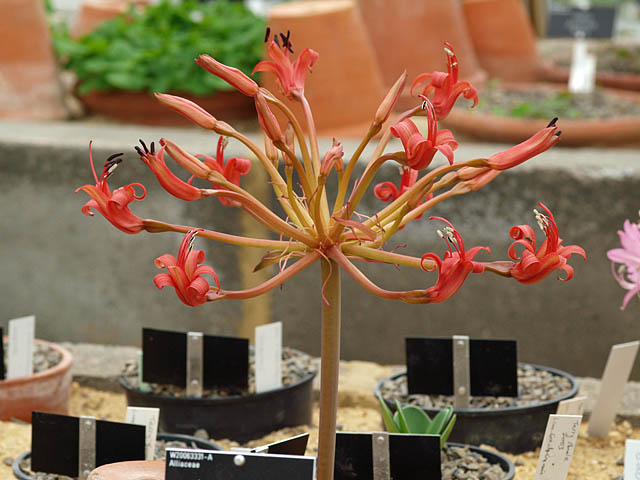
Brunsvigia orientalis
Note the differing flower shapes, which in the wild attract different pollinators - B. bosmaniae's flowers are widely flaring and are pollinated by noctuid moths, whereas the flowers of B. orientalis are less flared and pollinated by sun birds.
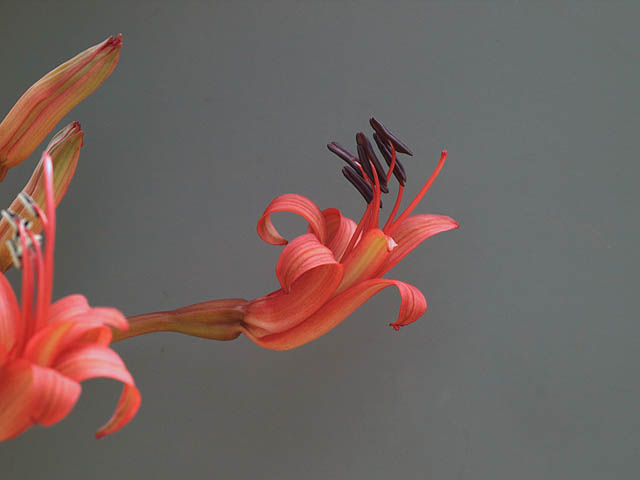
Brunsvigia orientalis flower
I think one reason they have flowered is that the roots have escaped the pots and reach far out into the plunge - several feet!! This makes the pots feel as if they have been concreted into their holes - we could never move them now without breaking a huge amount of this root off and as they resent disturbance this is not something we are likely to try!
The third unexpected flowerer was Oxalis palmifrons. We have quite a lot of the South African bulbous Oxalis, so useful for autumn and winter colour, looked after by our staff member Chris Allan. Most species - of which there are over 200 in South Africa - are profuse flowerers, but O. palmifrons has a reputation of being a shy flowerer in the UK, where it is grown mainly for its attractive palm-like foliage:
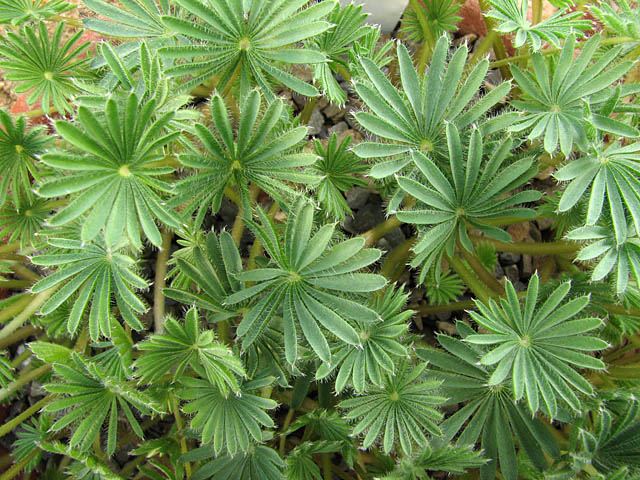
Oxalis palmifrons
It didn't make a lot of flowers, but this was the first time we had seen any at all. They opened a beautiful soft pink, fading over time to nearly white:
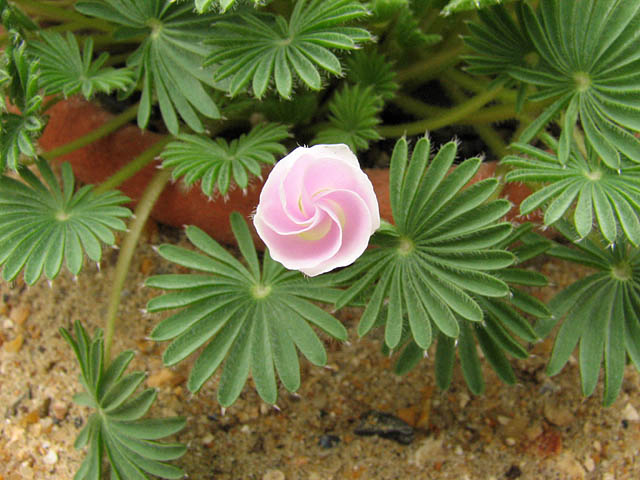
Oxalis palmifrons flower opening
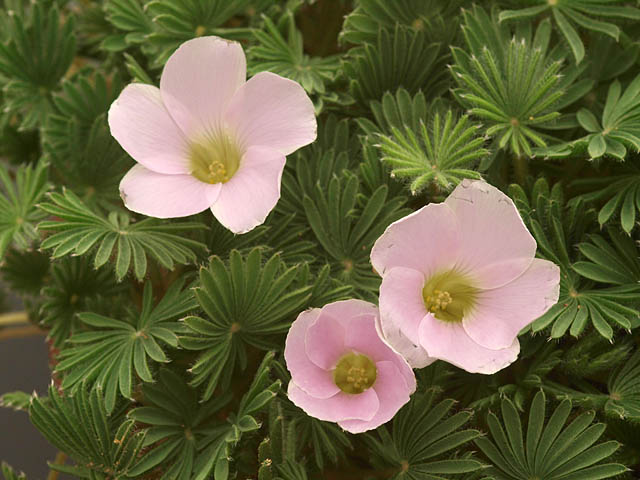
Oxalis palmifrons flowers open
Not at all shy of flowering is the well-known Oxalis massoniana with its bright orange flowers that have a yellow eye. This has become a favourite in recent years, often seen on the show bench and made widely available by Ingwersens nursery.
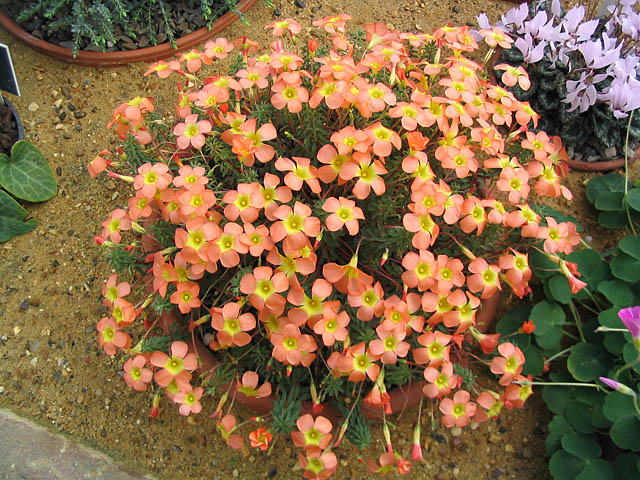
Oxalis massoniana
A favourite of mine is going round under the name Oxalis karooica but this name seems not to be valid and the plant is probably O. gracilis, though it has to be said the taxonomy of Oxalis species is a nightmare and this name may not be right either! Name aside, it has a beautiful flower:
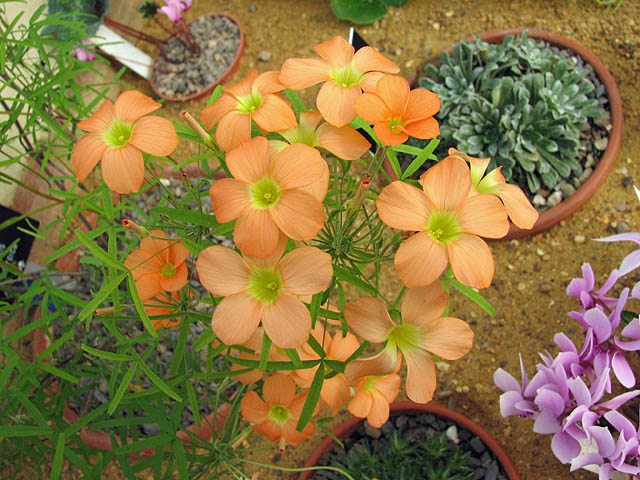
Oxalis gracilis
As you can see it is similar in some ways to O. massoniana in being orange with a yellow eye, but the orange is a much softer, more pastel shade. Here are the two side by side for comparison:

Oxalis massoniana (left) and Oxalis gracilis
O. gracilis also has very different leaves and growth habit to O. massonia. It is rather lax in growth and needs a few twigs to support the plant while in flower or they flop all over. Another pair of Oxalis whose flowers are similar yet different to each other are yet to flower this year but I got pictures last year. The first is Oxalis versicolor, deservedly popular for its flowers which while furled up resemble an old-fashioned barber's pole with red and white stripes. However we recently got another species, Oxalis goniorhiza, which has a similar pattern but again in much softer colours. Here are these two side by side:
 and Oxalis goniorhiza.jpg)
Oxalis versicolor (left) and Oxalis goniorhiza
While in this comparing mood, but now in a different South African genus entirely, we have two forms of a dwarf Lachenalia which are very different in leaf. I find it hard to believe these are the same species but am told it is just rather variable. One form has longer, narrow and plain leaves, while the other has shorter, broader, spotted leaves. The species is L. pusilla. Here they are side by side:
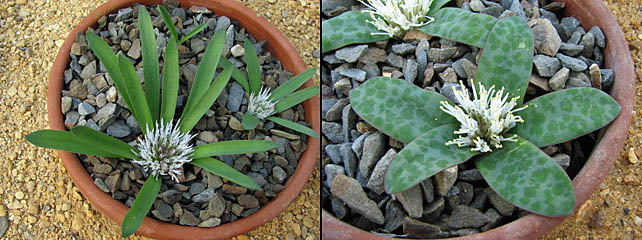
Lachenalia pusilla forms
Staying in South Africa, we had flowering a little while ago now the tiny Nerine rehmanii.
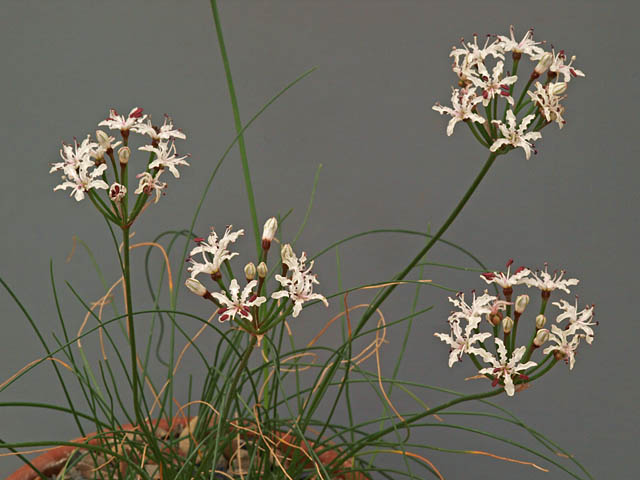
Nerine rehmanii
This comes from Swaziland and is a summer-grower, going dormant for winter. It is the smallest of all the nerines - the flowers stem is just a few cm tall and the heads just a cm or two across. You can gauge the size a bit better if I put my little finger in view:
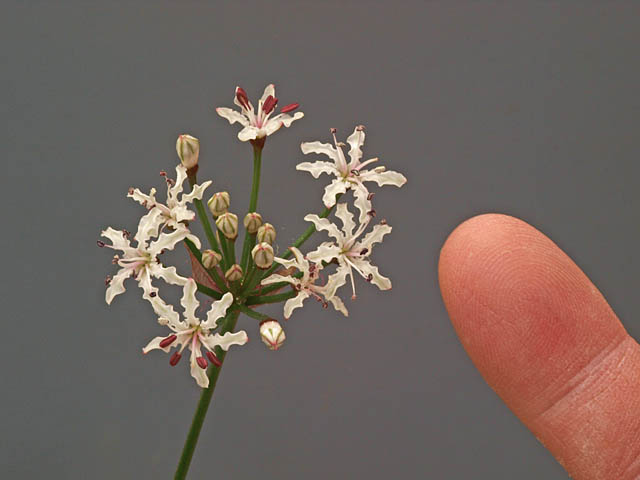
Nerine rehmanii flower
Finally this week, wandering away from the alpine department and into the big Wisley Glasshouse, I noticed some other South African plants making an impact - two Aloe species. The first was Aloe cooperi. In the warmth under glass, it is easy to cultivate and will stay evergreen. In cooler conditions it will die down for winter, when it should be kept dry. It is said to be hardier than many other aloes and may be worth a try out of doors but I have no experience of this.
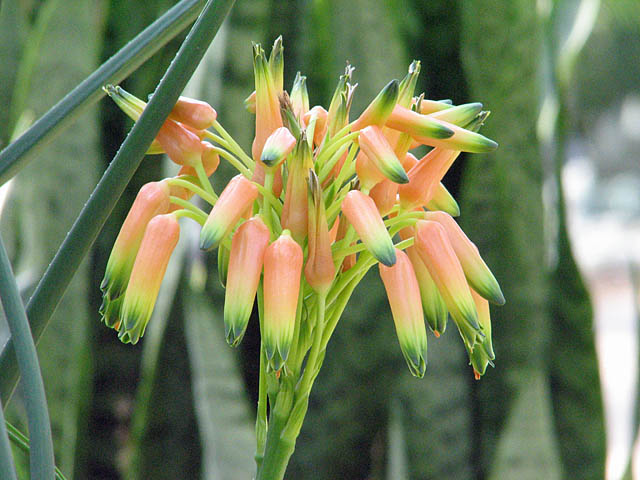
Aloe cooperi
The other species flowering is A. ciliaris, with much brighter flowers. This Aloe has a couple of varieties and A. ciliaris var ciliaris has the distinction of being the only Aloe that has a climbing habit.
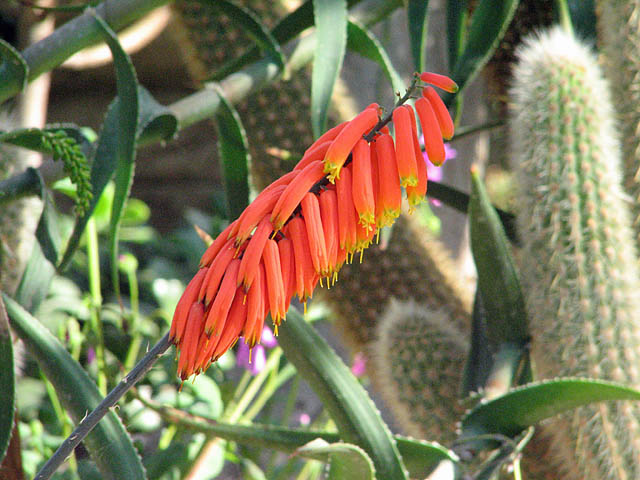
Aloe ciliaris
^ back to the top ^
|

